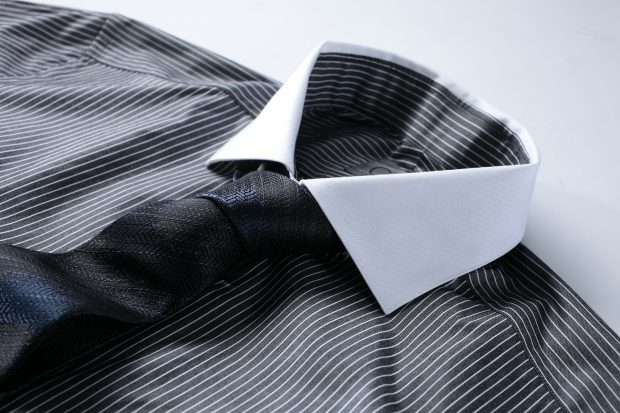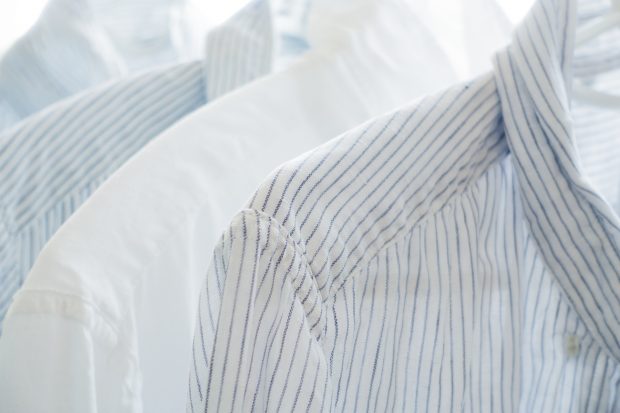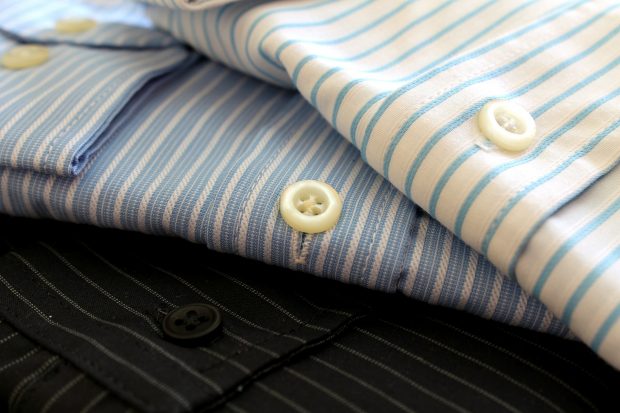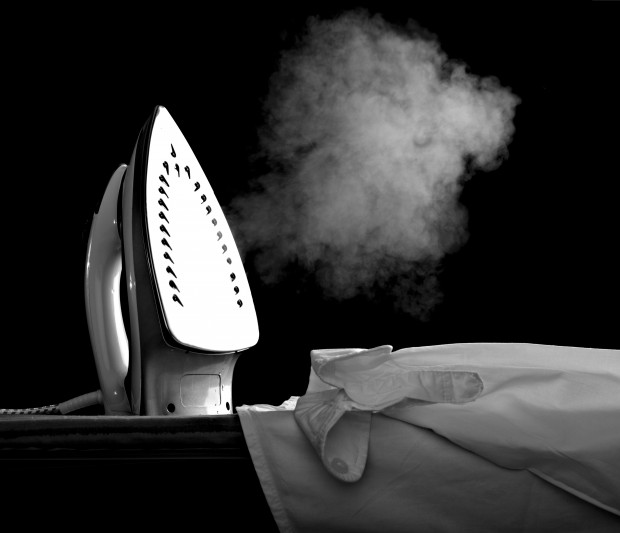Dress shirt shrinkage: information and tips.
It’s almost too easy to shrink clothing accidentally, but it only takes a little forethought and care to avoid shrinking dress shirts. A great shirt fits well and feels fantastic, and you want to make sure it stays that way as long as possible.
You may not be able to reverse the damage once a shirt has shrunk, but with the right care, you can minimize dress shirt shrinkage in the first place.
Why do dress shirts shrink after washing and drying?
Most top quality dress shirts are made of 100% cotton or linen, and both fabrics are prone to shrinkage. It helps to understand why cotton and other fabrics shrink in the first place. During the manufacturing process, tension is applied to the yarns and eventually the fabrics as they are produced.
Heat from the washer and dryer, and the agitating movement of the washer, release the tension, relaxing the threads somewhat and compressing them to a degree. In other words, shrinkage.
How much should a dress shirt shrink?
Good quality woven cotton will shrink an average of 1 to 3 percent, and should shrink evenly. It may not sound like enough to make a difference, but for a shirt that is about 30-inches long at a medium size, that translates into nearly a full inch off the length, and just under half an inch on a 15-inch collar. That’s enough to make it uncomfortable.
Washing and drying tips for your dress shirts.
Keeping the nature of the fibers in mind, the first rule in preventing shrinkage lies in avoiding the aggravating conditions. When it comes to washing, avoiding heat and agitation can be accomplished in two ways:
1. Hand washing the shirt in cool or lukewarm water.
2. Using the delicate cycle and cold water in the washer.
Be sure to choose a gentle laundry solution made for natural fabrics.
Dry cleaning tips and following the label on dress shirts.
Dry cleaning is problematic and not recommended as a solution to dress shirt shrinkage. It involves a two step process. The first step uses harsh chemicals which aid in loosening and removing dirt, but the chemicals cause damage to the fibers.
Then, very high temperatures are used in the drying process which naturally exacerbate shrinkage. The process is completed with high temperature pressing, which puts further duress on the fabric.
It’s still a good solution for spot cleaning of tough stains, or for the odd occasion. But it is far better to simply allow the shrinkage to happen naturally, through the wash, dry and iron cycle. You’ll be doing yourself a favor by prolonging their useful life.
If you do use the services of a dry cleaner, be sure to request hand rather than machine ironing to minimize exposure to excessive heat.
Exercise caution when drying your dress shirts.
The dryer is the most significant source of heat in cleaning shirts, and shrinkage can happen even at low settings. Completely avoiding it is the best way to minimize dress shirt shrinkage.
Some useful tips:
1. Avoid wringing the fabric, since this only serves to compress the fibers and may lead to uneven shrinkage – which is what you’re trying to avoid. It also promotes wrinkling.
2. Shirts made of lighter weight fabrics such as broadcloth or poplin can be dried by hanging them on non-metal hangers, preferably with rounded ends to retain a more natural shape. This also helps prevent excessive wrinkling.
3. A series of folding tables can also represent a good solution, especially for heavier fabrics like twill or Oxford cloth. First, you’ll add a layer of towels to absorb the moisture. Shirts should be buttoned up at least partially and dried flat, turning two or three times per side. The towels may need to be replaced if the shirt was particularly wet to begin with.
4. Avoid drying your dress shirts out in the sun, which is just another source of heat.
Using the right ironing techniques to prevent shrinkage.
When ironing, it’s essential to use the lowest possible temperature setting. Pass the iron back and forth over the fabric as quickly as possible, rather than pressing down more heavily.
Wrinkle-free fabrics may seem like a good option, but they are actually pre-treated with chemicals like formaldehyde, and aren’t recommended as a replacement for proper care.
Reduce dress shirt shrinkage with the right method.
This whole process may seem daunting at first, but once you’ve got a rhythm going, it will be quick and painless. Aside from minimizing shrinkage, you’ll prolong the life of your shirts and save money in the long run. Money well spent on new dress shirts.






